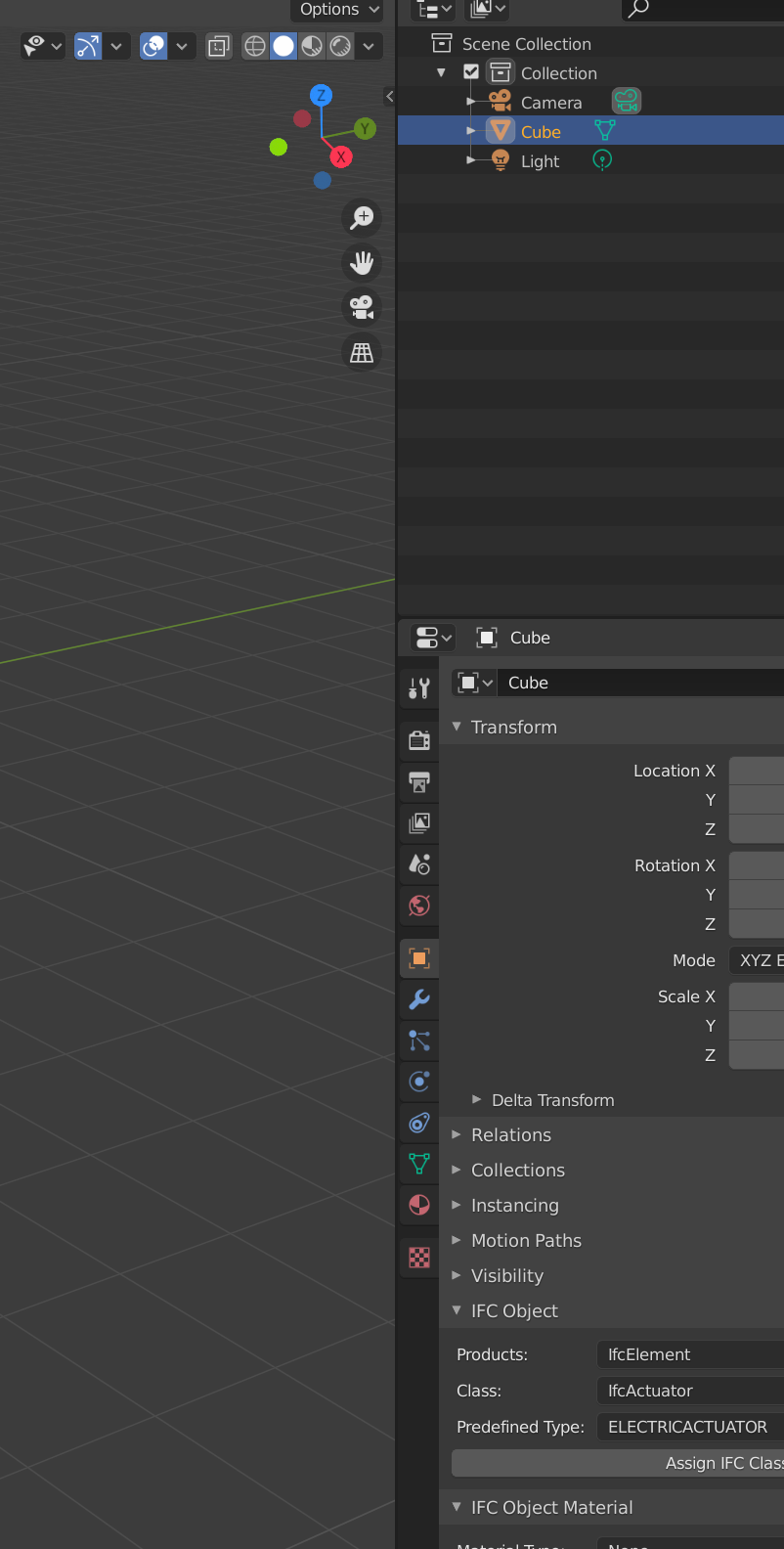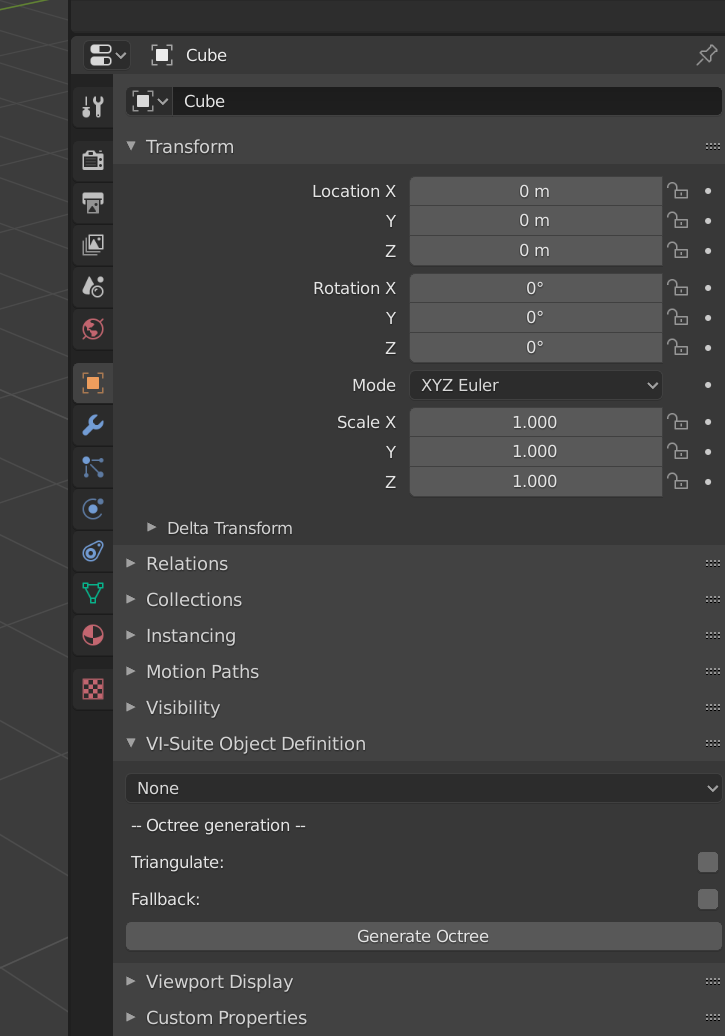@Moult
Sorry, maybe its internal words for things used at my office..? Nothing complex.
DF is Daylight factor= ((illuminance indoors/illuminance outoors) x 100)
The daylight factor is the proportion of light from the sky that hits a point or a surface. A standardized sky model is used to approximate an even cloudy sky. This sky model called the CIE overcast sky is three times brighter at zenith than at the horizon.
We measure inside office and apartment environments we currently are developing. . but in my country we have this measurement standard for apartments and households: daylight factor of average 1% has to be fulfilled at a certan point placed half way into the depth of a room.
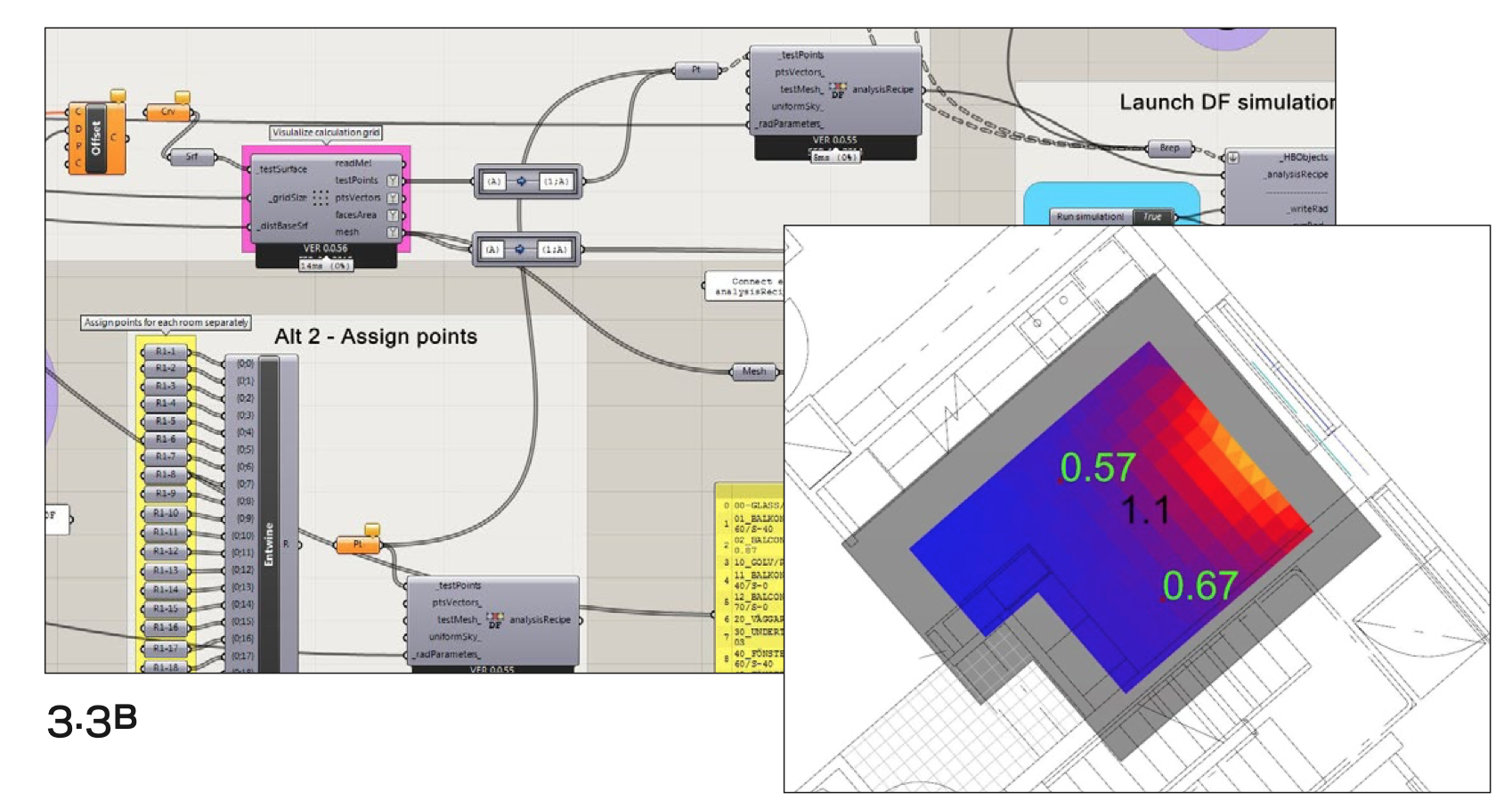
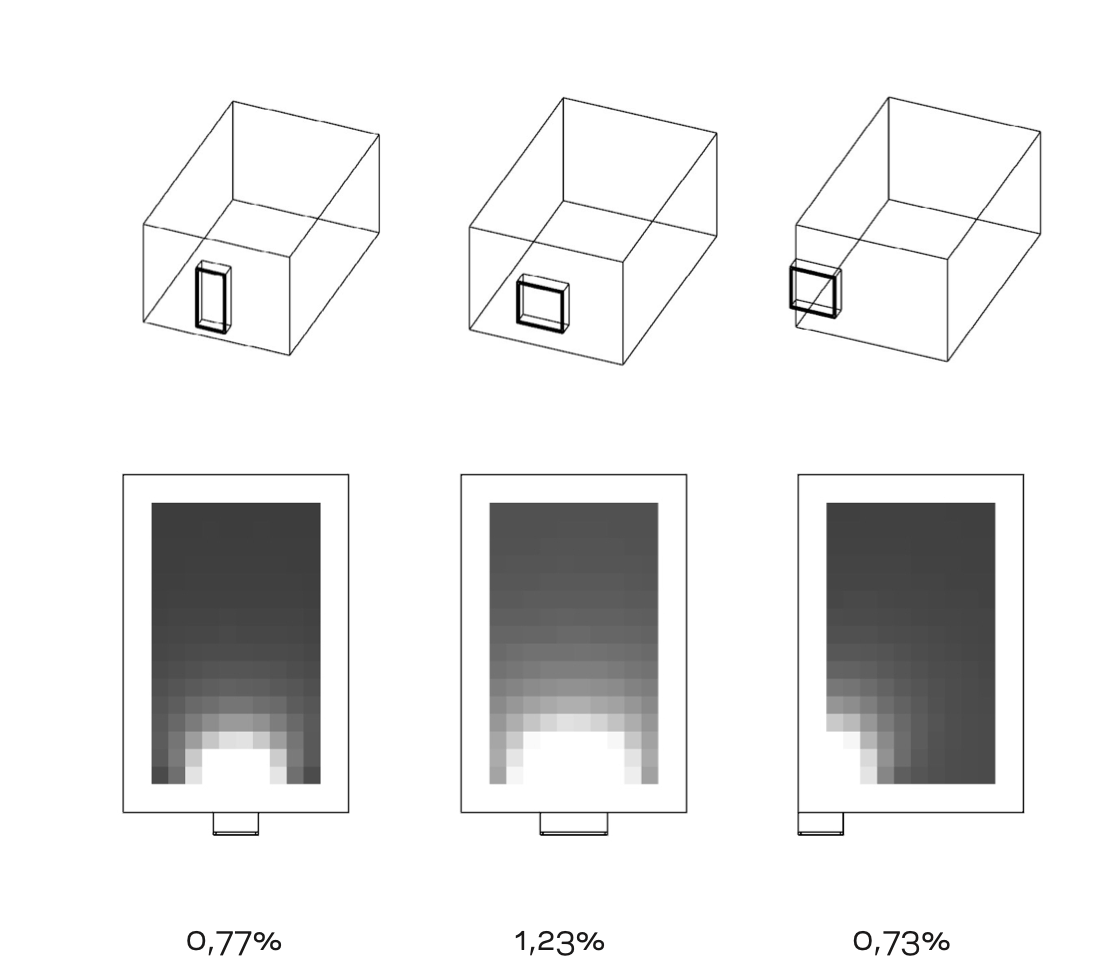
The VSC stands for Vertical Sky Component, here in my country this is similar to what you did in ladybug in utube?.
The Vertical Sky Component (VSC) is described by the UK Building Research Establishment (BRE) as the ratio of the direct sky illuminance falling on the vertical wall at a reference point, to the simultaneous horizontal illuminance under an unobstructed sky [Littlefair, 1991]. It also states that the Standard CIE Overcast Sky model is to be used for the sky illuminance distribution. This means that the reference value for the VSC percentage is effectively the unobstructed horizontal sky component.
The calculation performed by this component comes from this discussion on the RADIANCE forum: http://www.radiance-online.org/pipermail/radiance-general/2006-September/004017.html
The VSC diagram indicates the proportion of the sky light that comes from a CIE overcast sky (cloudy sky) that hits each facade. A rough assumption can then be made that windows which are reached by less than 12% VSC (shown in dark blue color) are likely to have difficulty achieving daylight requirements (DF factor above) which makes VSC a good way of knowing in a early stage where problem areas could be in the project regarding daylight factor.
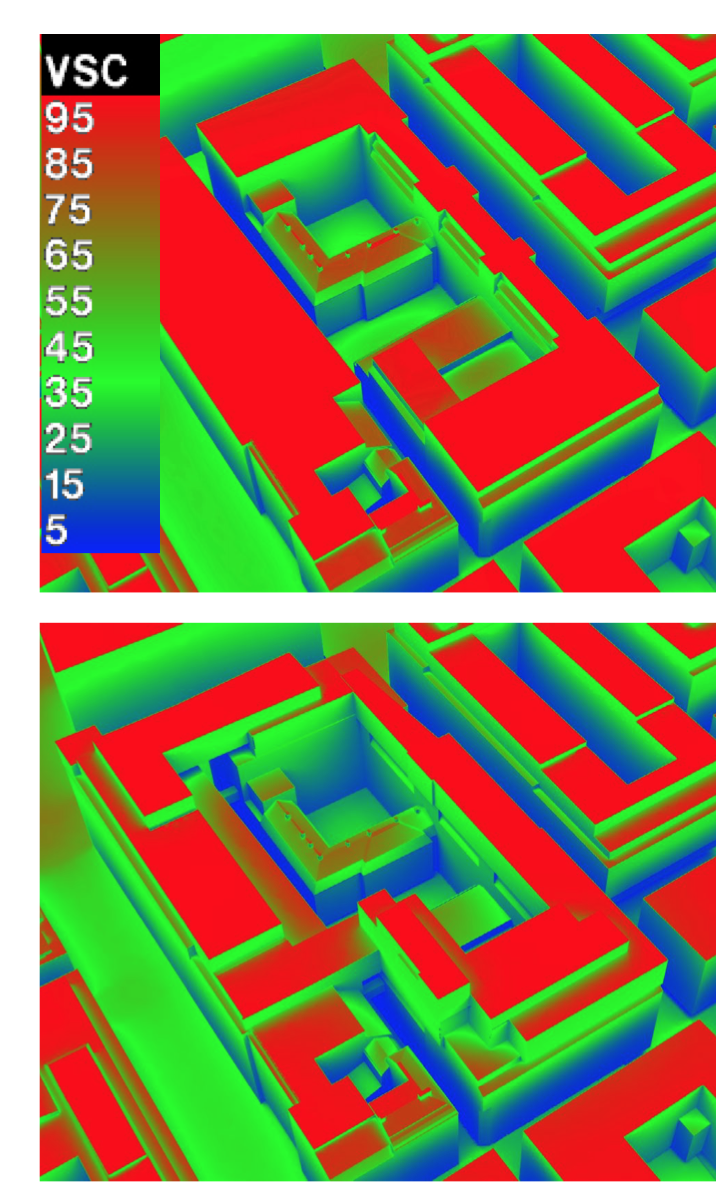
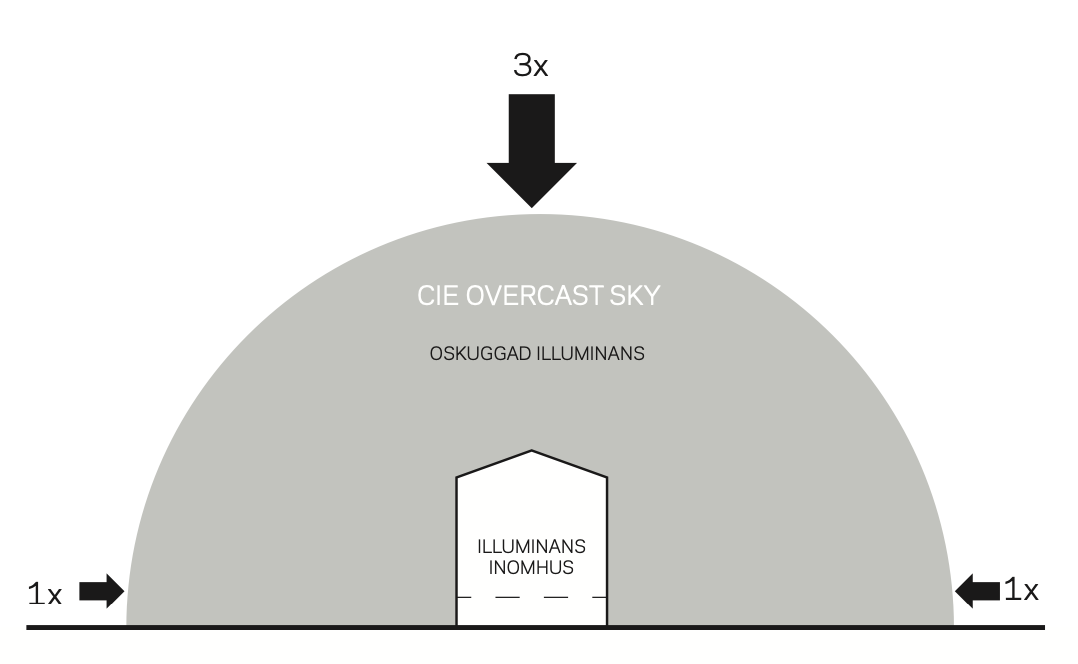
Other interesting and great measurementts and more climate based methods, but more complex are; useful daylight illuminance (UDI), daylight autonomy (DA), Spatial Daylight Autonomy (sDA), Annual sunlight exposure (ASE), Daylight glare Probability (DGP). All great stuff very powerful indicators that can i.a. be used to determine daylight, solar radiation and glare. Can predict visual comfort.
But both material and geometric input are needed.
Cheers!
